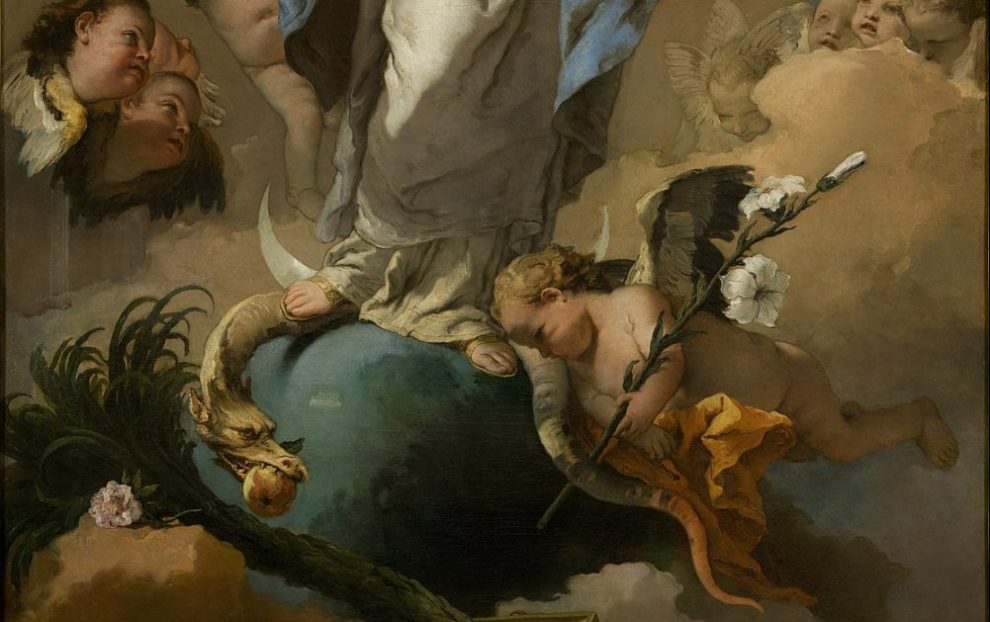The other day my friend Alicia was telling me how sad and angry she felt when Hurricane Jeanne hit the poorest country of the Western hemisphere, Haiti, killing thousands of people and leaving hundreds of thousands homeless. Alicia, who live in Miami, was homebound because Jeanne was about to hit Florida, becoming the fourth big hurricane to strike there this year.
But she was not concerned for her own safety; rather, she was frustrated because she could not go out to gather help for Haiti, a country she loves and where she has worked tirelessly for years to let the Haitian people know that, despite all appearances to the contrary, they are not forgotten. Her organization works to build schools and better housing and, above all, to make the people of Florida aware of Haiti’s plight and to mobilize resources for the country.
Meanwhile, war rages on in Sudan, Iraq, Afghanistan, and other parts of our globe. Mount St. Helens threatens with a monumental explosion. There are reports of earthquakes and other disasters. On the home front we face domestic violence, gangs, abuse, ignorance, an alarming drop-out rate among Hispanic youths, daily deaths at the border.
Could this be the end of the world?
My first reaction is to say yes, yes, yes. This is the end! Or it should be.
Actually, though, this is the beginning of the world, but not because of the current natural catastrophes and all the human evil combined. This world is about to end and another one is about to begin for a very simple reason: This is December.
Every December we are visited by a woman clothed in the sun, with a crown of stars on her head and the moon under her feet. The woman is pregnant, and the dragon is waiting to devour the fruit of her womb. The fruit of her womb is hope, and its destruction would, indeed, be the end of our world and all worlds. We might not believe in dragons, but we cannot deny the clear and present dangers.
For many people in 16th-century Mexico, too, the signs, wonders, catastrophes, and invasions of their home must have felt like the end of the world. The book of Revelation must have made absolute literal sense to them. The hope of the Messiah’s return was encouraged from many a Christian pulpit.
But then, in 1541, when everything seemed to be darkness and destruction, this woman, Our Lady of Guadalupe, appeared and assured people that the dragon would not harm her child. As theologian Virgilio Elizondo and others have pointed out, her presence marked the beginning of a new world, a new conception of relationships. It was the end of an era of discrimination, elimination, loss of identity, and the beginning of a world in which even God is a mestizo, so there can be no room for racism.
The outlook in 2004 does not seem any rosier than in 1541. What does this December woman have to do with us? Is she still heralding a new world? She certainly is. Her world is one that will fight the many dragons we encounter and will finally announce that the fruit of Miriam’s womb will indeed save the world.
Sound too naïve? Not really. This is how things need to come about:
My friend in Miami was angry and sad but never passive. On the phone, by e-mail, in any way she could, Alicia started mobilizing thousands of people in Miami, collecting all kinds of aid, speaking passionately about the need to organize, rescue, and reconstruct. She was calling and working for a new Haiti. But Alicia is just one of many people today who fight back against the dragons.
Think of all of your own heroes and heroines; think of all who refuse to stand back and watch the world destroy itself, all who refuse to let injustice and violence prevail.
If you worry that you or they are too insignificant to battle today’s dragons, just remember Mary of Guadalupe and the insignificant nobody, Juan Diego. She tells him to go and speak to the powers that be and to proclaim a new era. Five centuries later we still recount their story.
Who needs to give birth to a new world? Who needs to protect it against the dragons? This December, like every December, we receive a visit from Our Lady of Guadalupe. We wait. We pray. We hope. We get angry. We get discouraged. But we know there is a new world right around the corner if we fight and hope.
This article also appears in the December 2004 issue of U.S. Catholic (Vol. 69, No. 12, page 50). Click here to subscribe to the magazine.
Image: Wikimedia Commons












Add comment